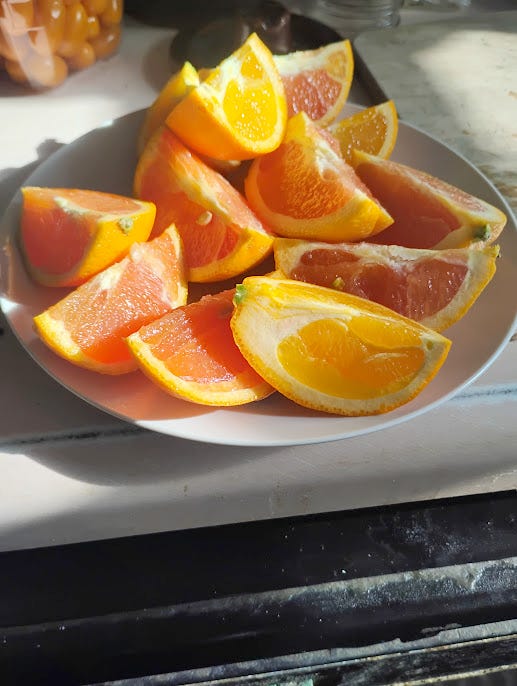The Rise Of Seedless Oranges
In 1873, amid the orange groves of Riverside, California, a peculiar branch caught Eliza Tibbets' attention. Unlike the seed-filled fruits surrounding it, this branch bore oranges without seeds—a natural mutation that would transform citrus cultivation worldwide. This discovery of the Washington navel orange marked the beginning of commercial seedless citrus production in the United States.
The navel orange's journey from chance discovery to agricultural revolution unfolded over decades of careful propagation. Growers learned that these trees could not reproduce through traditional means—each new tree required grafting from existing stock. This limitation became an unexpected advantage, ensuring genetic consistency across generations and establishing a standardized fruit quality that merchants and consumers could rely on.
Throughout the twentieth century, citrus breeders expanded beyond that first seedless variety. Their work with Valencia oranges yielded new strains that combined seedlessness with distinct flavors and harvest times. The development of Cara Cara oranges in Venezuela introduced a pink-fleshed variety that retained the navel orange's seedless character while adding higher levels of lycopene and unique flavor compounds. Blood oranges followed similar paths to seedlessness, with Sicilian varieties providing the genetic foundation.
These breeding achievements required an intricate understanding of citrus genetics. Selective breeding programs identified naturally occurring mutations that affected seed development and then stabilized these traits through careful crossbreeding. The process demanded patience—each new generation of trees required years to mature and bear fruit. Successful varieties emerged from thousands of attempts, with breeders selecting for both seedlessness and essential commercial qualities like disease resistance, yield, and shipping durability.
The standardization of seedless orange production reshaped citrus agriculture. Grafting techniques spread from small experimental orchards to vast commercial operations. Processing facilities adapted their equipment for fruit without seeds, increasing efficiency and reducing waste. These changes rippled through the industry, affecting nursery practices, harvesting methods, and distribution systems.
Agricultural records demonstrate the impact: by the mid-twentieth century, seedless varieties dominated California's orange production. Similar transitions occurred in Mediterranean citrus regions, Australia, and South Africa. This shift reflected both consumer preferences and agricultural economics—seedless fruits commanded premium prices while costing less to process.
Current citrus breeding programs balance consumer demand for seedless fruit with the need to maintain genetic diversity. Researchers preserve seeded varieties in germplasm collections, recognizing their importance for future breeding efforts. Their work continues the careful observation and selection that began in that Riverside grove, advancing our understanding of citrus genetics while developing fruits that meet evolving agricultural needs.
This transformation of oranges from seeded to seedless varieties represents the intersection of chance discovery, scientific understanding, and agricultural innovation. The careful work of generations of citrus breeders and growers has fundamentally changed how we cultivate and consume one of humanity's oldest cultivated fruits.
Additional Sources:
Vardi, A., Levin, I., & Carmi, N. (2008). Induction of Seedlessness in Citrus: From Classical Techniques to Emerging Biotechnological Approaches. Journal of the American Society for Horticultural Science, 133(1), 117-126. Link
Zhang, S., Shi, Q., Albrecht, U., Shatters, R., Stange, R., McCollum, G., Zhang, S., Fan, C., & Stover, E. (2017). Comparative transcriptome analysis during early fruit development between three seedy citrus genotypes and their seedless mutants. Horticulture Research, 4. Link




